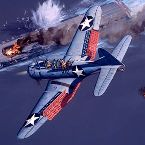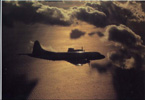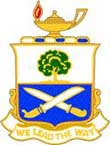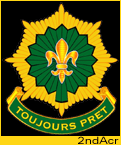ChezDaJez
Posts: 3436
Joined: 11/12/2004
From: Chehalis, WA
Status: offline

|
quote:
Mogami said:
Hi, Please go back and study Dec 7 again.
The planes in PI were not STILL on the ground. They were on the ground AGAIN.
They had taken off in the ealry hours when attack on PH was learned of and they returned to refuel just in time to be caught by Japanese. (The Japanese attack was delayed by fog at Japanese airfields)
If the Japanese had attacked on time the fields in PI would have been empty. If the Japanese attack had been a little later the fields in PI would have been empty (AGAIN)
Some B-17s were launched without bomblaods and with orders to patrol the waters around Luzon. They launched around 0730 and were recalled less than 3 hours later. Berenton then held them on the ground waiting for permission from MacArthur to attack Formosa. The order never came.
As far as the Japanese attack being delayed, it was due to inclement weather over the targets in the PI. This attack was orginally planned to be on target at 0630. The bombers would still have been on the ground.
Here are some interesting quotes from "The Army Air Forces in World War II, Book 1, Chapter 6 "Plans and Early Operations: January 1939 to August 1942." by W.F. Kraven and J.L. Cate. Bold font is mine.
quote:
Had the Japanese been able to keep to their schedule, the attack on the Philippines would have coincided much more closely than it did with that at Pearl Harbor. But inclement weather above Luzon delayed execution of the plan for an early morning attack, and gave the Americans advance notice of several hours. In fact, the major attack on Clark Field, where virtually half of our total bombing force was destroyed on the ground, did not develop until after noon, some nine hours following the initial bombing of Oahu.
So what were they doing during this time? Berenton appears to be the only wanted that wanted action.
quote:
A plan of action which had been considered for this eventuality by the Far East Air Force was an American air attack against Formosa, the natural point of concentration for a Japanese invasion of the Philippines. Objective folders, although without calibrated bomb target maps or aerial photographs, had been prepared, and Col. Francis M. Brady, chief of staff to General Brereton, promptly took the initial step toward mounting the operation by ordering the B-17's at Clark Field prepared for the mission. Brereton himself reported at about 0500 to General MacArthur's headquarters at Fort Santiago, where he requested permission of Brig. Gen. Richard K. Sutherland, chief of staff, to carry out offensive action as soon as possible after daylight.
and what did Sunderland do? He blamed Berenton for the lack of action.
quote:
The record of an interview by Walter D. Edmons with Lt. Gen. Richard K. Sutherland in Manila on 4 June 1945 (copy supplied the author through the courtesy of Mr. Edmonds) reads on the question of "Why was Formosa not bombed?" as follows:
Gen. Sutherland began by saying that all the B-17s had been ordered to Del Monte some days before. On a check it was found that only half had been sent. GHQ wanted the planes in Del Monte because they would there have been safe from initial Jap attacks--they could not have been reached at all--and they could themselves have staged out of Clark Field to bomb Formosa. This direct order had not been obeyed. And it must be remembered that GHQ gave out general orders and that the AFHq were supposed to execute them. As Sutherland recalls, there was some plan to bomb Formosa, but Brereton said that he had to have Photos first. That there was no sense in going up there to bomb without knowing what they were going after. There were some 25 fields on Formosa. Holding the bombers at Clark Field that first day was entirely due to Brereton.
And what was MacArthur doing? Nothing.
quote:
The official US Army history, published in 1952, gives greater weight to Brereton's version than the Sutherland/MacArthur version! Note particularly, the discrepancy in MacArthur's supposedly holding back the bombing attack in favor of a reconnaissance mission, then later the same day authorizing the bombing mission in spite of the lack of reconnaissance. Considering other events, and MacArthur's non-appearance throughout the morning of that critical day, this author believes that a plausible explanation is the MacArthur suffered at least a mild nervous breakdown upon receiving the news of Pearl Harbor--and realizing his inevitable defeat in the Philippines--and that Sutherland's primary task that morning was to get the "boss" to pull himself together and assume effective command. After the efforts that MacArthur had initiated to repudiate the long-standing strategy of 'delay-and-defend until the fleet could arrive to reinforce', in favor of an aggressive forward defense relying largely on the striking power of the B-17s he demanded, it boggles the mind to discover another believable explanation for his failure to even meet face-to-face with his air force chief that morning. Further evidence of his tenuous response to events is the continued commitment to a forward defense of the beaches, until precipitously abandoning those plans in favor of the retreat to Bataan immediately after the Japanese landing at Lingayen Gulf--too late to move the mountains of material needed to feed and support his army.
and so while everyone's playing "Pass the Buck."
quote:
From this point on, a confused record reflects chiefly the confusion and bad luck which attended the American air effort on that first day of hostilities in the Philippines. The Summary of Activities for Headquarters, Far East Air FOrce, notes: "11:56 General Brereton communicated with General Sutherland and complete report was given General Sutherland of the air situation at this time including fact that it was planned to move the B-17's now at Del Monte to San Marcelino and to bomb Taiwan fields at late afternoon today." Then the summary jumps to 1240 to record a report that "10 planes, 6,000 feet, nationality unknown, headed for Manila. This information from the Navy." Under 1255 appears another report that "large force of planes, about 25, heading south reported in vicinity of Tarlac at 12:25." Under 1257 one reads of a Japanese propaganda mission earlier in the day: "Said planes dropped leaflets which read as follows: Way to permanent peace causing this conflict between Japan and the U.S. Roosevelt attempt curve our independence stop we all know than unless the US has not oppressed Japan, this war has not been started stop Our mission is to end this war as fast as possible and in order to achieve this end we should cooperate with Japan fully unquote." Then: "13:00 Reported by G-2 that Fort Stotsenburg is being bombed"; and again--"13:00 Report received from Stotsenburg many bombers very high bombed Clark Field at 12:35 P.M."
So why wasn't Clark ready? Surely they would have fighters overhead, planes dispersed, and defenses manned but what happens:
quote:
In response to a specific question from the Air Historical Office which indicated the existence of information that a warning had been sent and acknowledged by Clark Field, General Eubank under date of 5 August 1947 made the following statement:
Information of the Japanese formation which attacked Clark Field about noon, 8 December 1941, was not received by the Bomber Command prior to the attack. The formation was almost directly overhead at the time the air raid warning siren was sounded and the bombs began exploding a few seconds thereafter. One or two false air raid warning messages had been received earlier in the day.
The point of all this is, in relation to the Japanese 1st turn bonus in the game, that just because you know they are coming doesn't mean you can do a damn thing about it when your leadership has their thumb up their arse trying to figure out something that should have been planned and practised well in advance.
Chez.
< Message edited by ChezDaJez -- 2/9/2005 6:14:05 AM >
_____________________________
Ret Navy AWCS (1972-1998)
VP-5, Jacksonville, Fl 1973-78
ASW Ops Center, Rota, Spain 1978-81
VP-40, Mt View, Ca 1981-87
Patrol Wing 10, Mt View, CA 1987-90
ASW Ops Center, Adak, Ak 1990-92
NRD Seattle 1992-96
VP-46, Whidbey Isl, Wa 1996-98
|
 Printable Version
Printable Version


















 . Japan will have a big loosing sprea later on in the war so according to you there´s no point in that either then. Personally as allied i do find it ´fun´to see how i can get out of the mess and start an offensive some day in the future, if I can´t then congratulations to my opponent.
. Japan will have a big loosing sprea later on in the war so according to you there´s no point in that either then. Personally as allied i do find it ´fun´to see how i can get out of the mess and start an offensive some day in the future, if I can´t then congratulations to my opponent.




 New Messages
New Messages No New Messages
No New Messages Hot Topic w/ New Messages
Hot Topic w/ New Messages Hot Topic w/o New Messages
Hot Topic w/o New Messages Locked w/ New Messages
Locked w/ New Messages Locked w/o New Messages
Locked w/o New Messages Post New Thread
Post New Thread